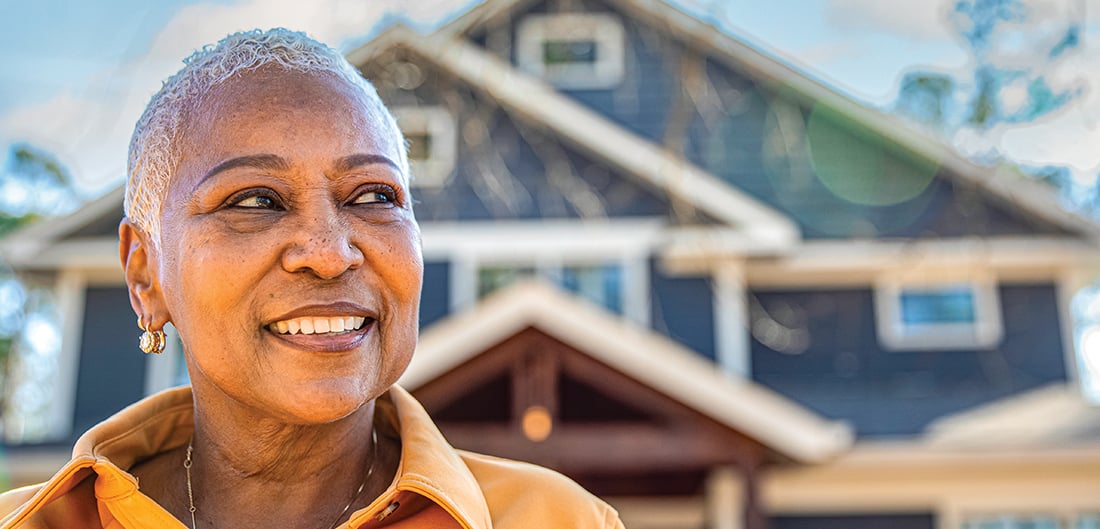For many Americans, approaching retirement can also mean getting ready for another major life transition: moving to a new home that fits your lifestyle changes.
Since stairs, narrow hallways and small bathrooms can become difficult to navigate as you age, conventional wisdom says moving is often the logical next step. But a 2021 AARP survey found 77% of adults 50+ want to remain in their homes for the long term.
So what if you could have your “forever” home right now? Universal design is an architectural style that makes this possible.
It helps builders create homes that are comfortable for people of all ages, including those with disabilities and mobility issues. While it’s not considered a one-size-fits-all approach, universal design can make your home functional no matter what stage of life you’re in.
Design features such as wider hallways, integrated grab bars and fewer steps can make your home functional for everyone, giving you the chance to stay in your current house without worrying about future accessibility.
So why should you consider a universally designed home as your next home purchase?
Flexible
Integrating universal design into your home doesn’t always require major renovations. There are plenty of small projects that can make a big difference.
Whether you’re just replacing something that’s broken, clearing out clutter or remodeling an entire space, keep these universal design features in mind when you’re planning:
- Soft-closing drawers and cabinets
- Waist-level appliances
- Walk-in bathtubs or stand-alone showers
- Grab bars and handrails
- Handles instead of knobs
- Automated lighting
- Ramps or lifts
- Minimal use of stairs
Cost-Effective
Here’s a fact that may surprise you: incorporating accessible features does not typically increase the cost of a remodeling project. In fact, you could end up saving money in the long run, since these designs can help you avoid future home updates.
With smart planning, there are plenty of universal design elements that can be incorporated at little to no extra cost.
Boost Resale Value
You may think an accessible home serves a narrow market. But, with our nation’s 77 million baby boomers now reaching retirement age, the opposite is often true. According to a 2023 report from the National Association of Realtors, 15% of first-time home buyers and 14% of repeat buyers are purchasing multigenerational homes.
Empty nesters and multigenerational families see homes with universal design principles as safe places for people with disabilities, children and the elderly. This makes an accessible home marketable to anyone who wants to live there for the long term.
Modern Aesthetic
Just because a home is accessible doesn’t mean it has to look institutional. At its heart, universal design is person-centered, and most design features don’t draw attention to themselves.
For example, thresholds that are flush with the floor are easy for a wheelchair to cross—but they also make it harder for someone to trip. And having appliances at waist level puts everything you need for cooking within arm’s reach. Those are features you can appreciate at any age.
Protect Your Investment
Universal design can help save you the trouble of moving or investing in expensive renovations as you age. It also gives you room to grow, whether you find yourself caring for your grandchildren or your aging parents.
At Erie Insurance, we know your home’s design is unique to you.
More than light fixtures and hallways, it’s built for real life, and you want to be sure it’s protected with the right homeowners insurance. Keeping in touch with your local ERIE Agent is the best way to ensure that your protection stays current (especially if you make any major renovations) and continues to meet your needs.
Peace of Mind
The same peace of mind that comes from knowing you can age in place can be found with a long-term care accelerated death benefit rider. Talk to your Agent today to help determine if one is right for you.
